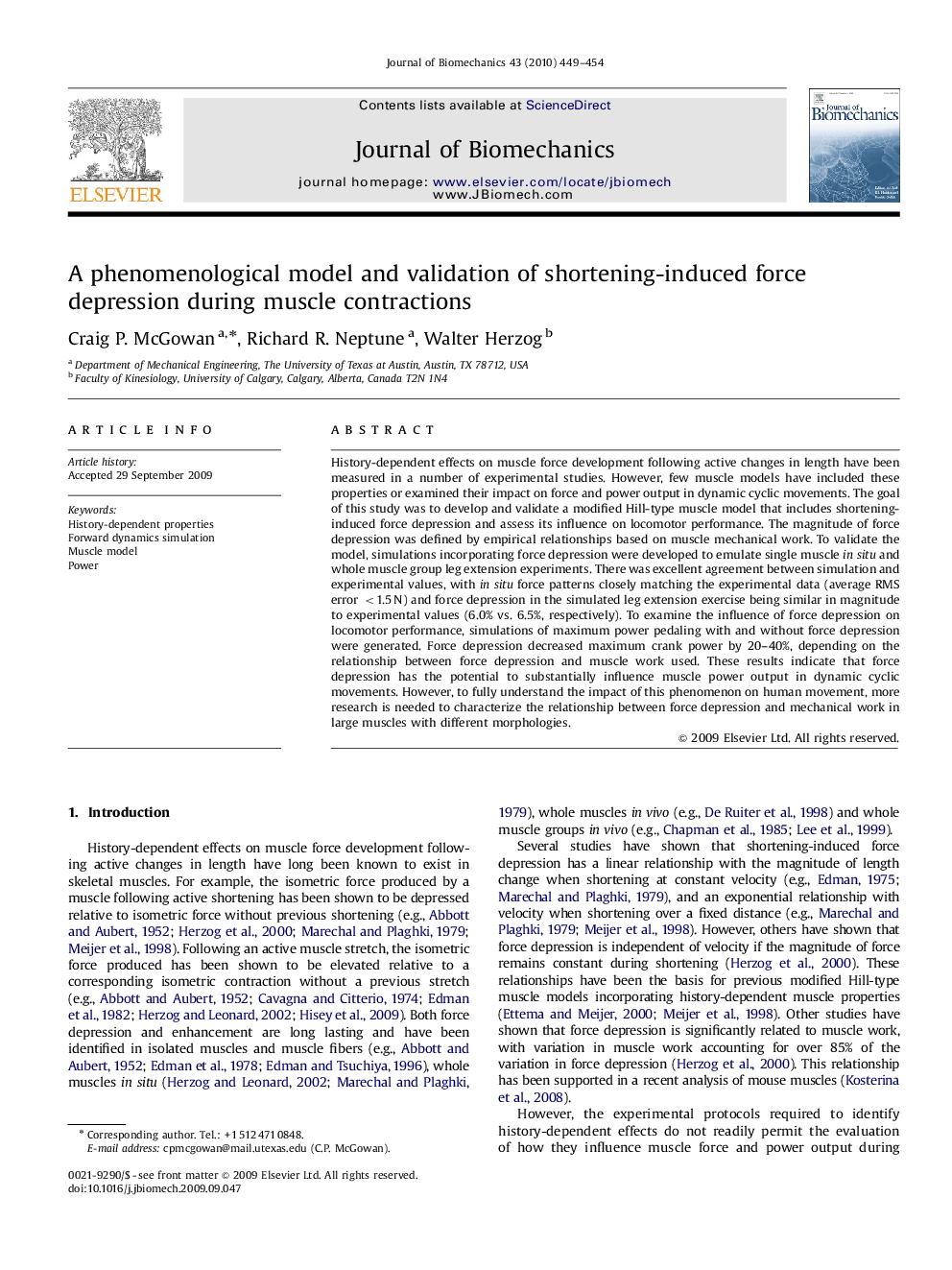| Article ID | Journal | Published Year | Pages | File Type |
|---|---|---|---|---|
| 872725 | Journal of Biomechanics | 2010 | 6 Pages |
History-dependent effects on muscle force development following active changes in length have been measured in a number of experimental studies. However, few muscle models have included these properties or examined their impact on force and power output in dynamic cyclic movements. The goal of this study was to develop and validate a modified Hill-type muscle model that includes shortening-induced force depression and assess its influence on locomotor performance. The magnitude of force depression was defined by empirical relationships based on muscle mechanical work. To validate the model, simulations incorporating force depression were developed to emulate single muscle in situ and whole muscle group leg extension experiments. There was excellent agreement between simulation and experimental values, with in situ force patterns closely matching the experimental data (average RMS error <1.5 N) and force depression in the simulated leg extension exercise being similar in magnitude to experimental values (6.0% vs. 6.5%, respectively). To examine the influence of force depression on locomotor performance, simulations of maximum power pedaling with and without force depression were generated. Force depression decreased maximum crank power by 20–40%, depending on the relationship between force depression and muscle work used. These results indicate that force depression has the potential to substantially influence muscle power output in dynamic cyclic movements. However, to fully understand the impact of this phenomenon on human movement, more research is needed to characterize the relationship between force depression and mechanical work in large muscles with different morphologies.
